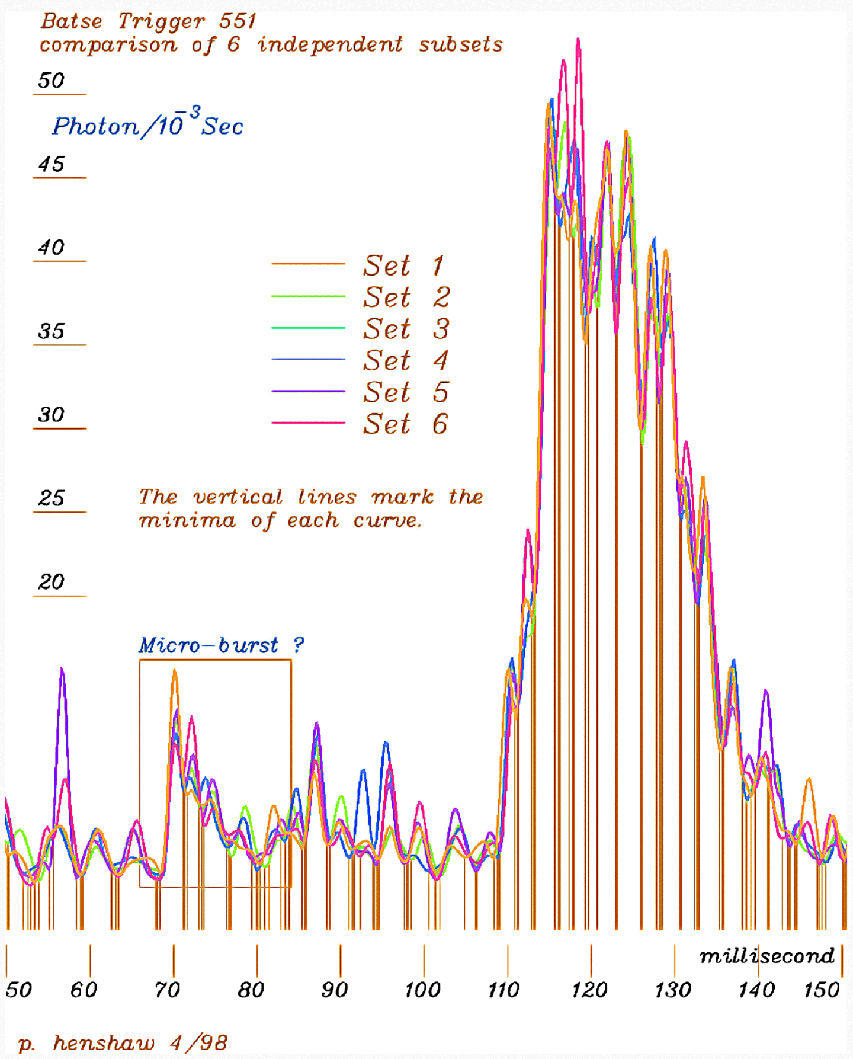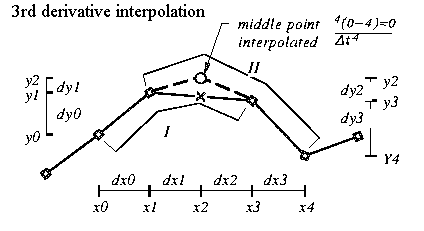Images from the BATSE satellite gamma ray observatory
1998 study of
Gamma Ray Burst record #551
Example of derivative reconstruction, exposing organic processes in seemingly noisy data
|
Detail of the First Pulse in the Gamma Ray Burst record
Overlay of 6 curves, drawn through the
points of the 6 subsets, |
The Plotted Raw data
All 16554 gamma rays recorded ,
One of 6 subsets, |
|
The large bursts of gamma rays are the most intense observable energy events known in the universe. They may reflect collapses into black holes, or super nova explosions, or other high energy cosmic process not yet identified. The small scale semi-periodic events seen in the detail of the first of the first large pulse, seem to reflect some real cosmic event process too. In each of the 6 subsets of the data they occur at close to the same time, but at varying scale. That is what one would expect for comparing sparse from several instruments viewing the same real events. The small scale variation also appears to both vary locally, and not vary in proportion to the big events. So they seem not to be associated with an equipment "hum" at 3-500 per second or with how the data is being treated. This scale of fluctuation in cosmic high energy processes has never been seen before, though, and so it would be important to study if it is real. It could possibly be an exotic phenomenon, perhaps as exotic as beats in a distant gravitational lens if gamma ray bursts come from the galactic core, perhaps, or the high frequency rippling of something else interesting. What exposes them is the special smoothing technique, for testing the hypothesis that the data may reflect a complex continuous rather than a noisy process. Just the fact that the rippling seems real does seem to confirm that quite important finding.
Interpolating points to reduce the jaggedness of the curves is called "derivative reconstruction" Here it exposes the same fine scale 3-5 millisecond variation, in each of the 6 subsets
|
|
|
|
Derivative reconstruction inserts new points and adjusts the middle point of 5 point sequences.
That minimize the "jerkiness" of a curve without suppressing the fluctuations.
It is not like a "running average" which flattens fluctuation and relocates it. |
|
|
|

